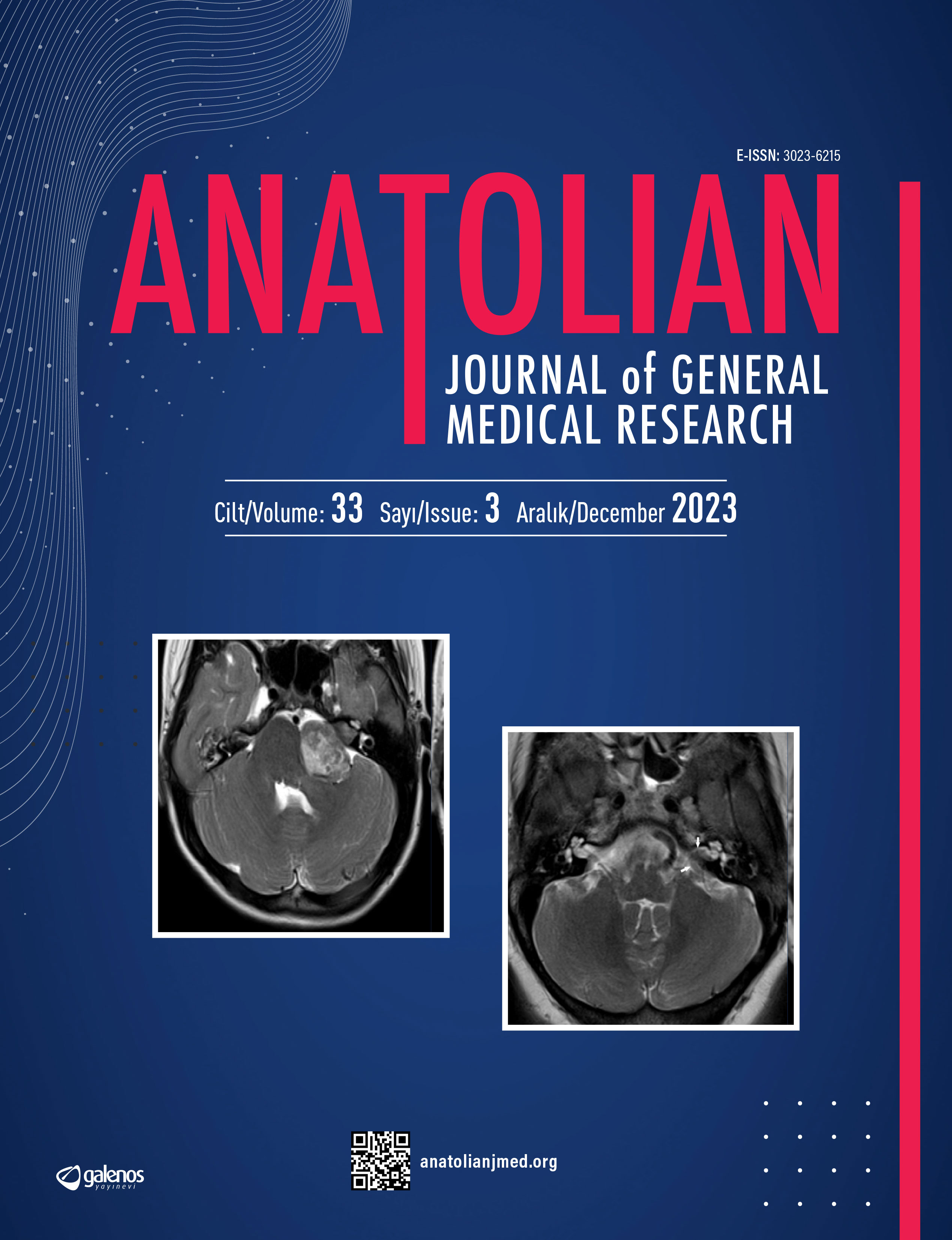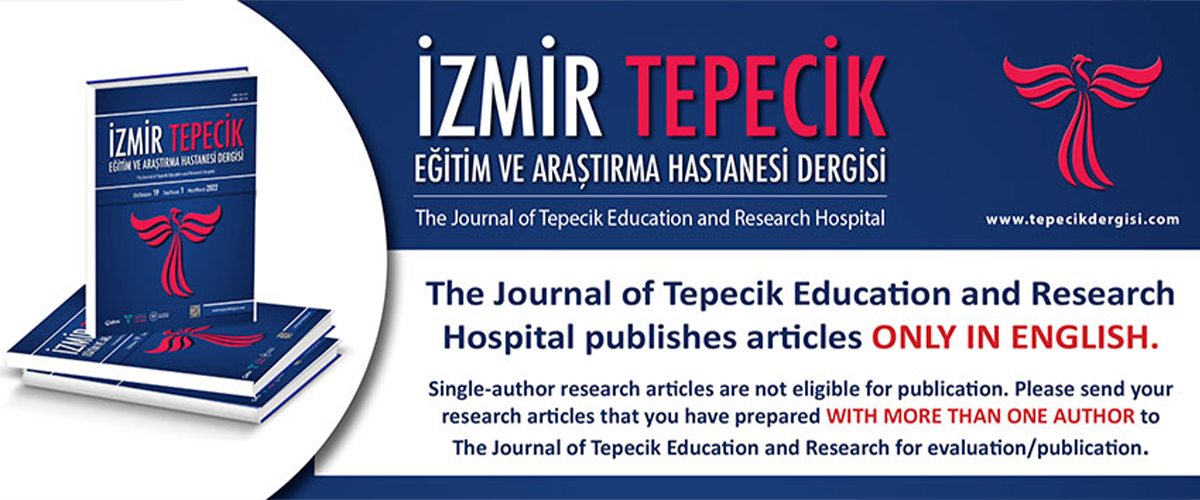








Comparison of the transurethral and percutaneous cystolithotripsy in patients undergoing simultaneous transurethral resection of the prostate
Hasan Deliktaş, Mehmet Çetinkaya, Hayrettin ŞahinMugla Sitki Kocman University, School Of Medicine, Department Of Urology, Mugla, TurkeyINTRODUCTION: In this study, we aimed to compare the success and complications rate of percutaneous cystolithotripsy (PCCL) and transurethral cystolithotripsy (TUCL) techniques that was performed during simultaneous transurethral resection of the prostate ( TURP).
METHODS: Forty-four patient with benign prostate hyperplasia (BPH) and bladder stones were enrolled in the study between June 2011 and May 2015. In patients who had stone size ≥ 30 mm, TURP combined with PCCL (n = 28), while stone sizes <30 mm were performed TURP and TUCL (n = 16). In TUCL group, the stones were removed through a 23 F cystolithotripter after fragmentation with pneumatic lithotripsy. TURP was then performed. In PCCL group, suprapubic access was applied under cystoscopic guidance. A 30 F Amplantz sheath was inserted. All bladder stones fragmented via pneumatic lithotripter were removed. Next, TURP was performed.
RESULTS: Average age and prostate volume were similar in both groups. Mean stone size of the PCCL group was 46.67±6.59, in TUCL group was 22.87±3.64 (p< 0.001). In PCCL group cystolithotripsy time was 32.92±10.06 minutes, while in the TUCL group was 42.12±11.68 minutes (p=0.009). All patients was achieved stone-free in both groups. Urethral stricture developed in two patients in the TUCL group. Mean follow-up time was 6 months.
DISCUSSION AND CONCLUSION: TUCL and PCCL has similar success rates in the treatment of bladder stones. In PCCL the operation time is shorter than TUCL and A safer method with compared to TUCL in large bladder stones. In TUCL seen more complications such as urethral stricture.
Transüretral prostat rezeksiyonu ile beraber yapılan perkutan ve transüretral sistolitotripsinin karşılaştırlması
Hasan Deliktaş, Mehmet Çetinkaya, Hayrettin ŞahinMuğla Sıtkı Koçman Üniversitesi Tıp Fakültesi, Üroloji Ana Bilim Dalı, MuğlaGİRİŞ ve AMAÇ: Çalışmamızda benign prostat büyümesi (BPH) ve mesane taşı birlikteliğinde, transüretral prostat rezeksiyonu (TURP) ile kombine edilen perkutan sistolitotripsi (PKSL) ve transüretral sistolitotripsi (TUSL) ameliyatlarının başarı ve komplikasyon oranlarını karşılaştırmayı amaçladık.
YÖNTEM ve GEREÇLER: Haziran 2011 ve Mayıs 2015 tarihleri arasında BPH ve mesane taşı nedeniyle ameliyat edilen 44 hasta çalışmaya alındı. Taş boyutu ≥ 30mm olan hastalara TURP ile beraber PKSL (n=28) uygulanırken, taş boyutu < 30mm olan hastalara TURP ile beraber TUSL (n=16) uygulandı. TUSL grubunda, 23 F sistolitotriptör ile mesaneye girildi. Taşlar pönomotik litotriptör ile kırılarak dışarı alındıktan sonra TURP yapıldı. PKSL grubunda ise sistoskopi klavuzluğunda chiba iğnesi ile suprapubik olarak mesaneye girildi ve mekanik dilatatörler ile uygun dilatasyon yapıldıktan sonra 30 F amplatz sheath yerleştirildi. Amplatz sheath içinden 26 F nefroskop ile mesaneye girilerek pönomotik litotriptör ile taşlar kırılarak dışarı alındıktan sonra TURP yapıldı.
BULGULAR: Ortalama yaş ve prostat volümleri her iki grupta benzerdi. PKSL grubunda ortalama taş boyutu 46.67±6.59 mm iken TUSL grubunda 22.87±3.64 mm idi (p< 0.001). PKSL grubunda sistolitotripsi süresi 32.92±10.06 dakika iken TUSL grubunda 42.12±11.68 dakika idi. PKSL grubunda taş boyutu daha fazla olmasına rağmen TUSL grubuna göre sistolitotripsi süresi daha kısaydı (p=0.009). Her iki grupta tam taşsızlık sağlandı. TUSL grubunda 2 hastada üretral darlık görüldü. PKSL grubunda 2 hastada TUSL grubunda 1 hastada yüksek ateş (>38°C) görüldü. Ortalama takip süresi 6 ay idi.
TARTIŞMA ve SONUÇ: Mesane taşı tedavisinde PKSL ve TUSL benzer başarı oranına sahiptir. PKSL de operasyon süresi daha kısa ve büyük mesane taşlarında TUSL’ye göre daha güvenilir bir yöntemdir. TUSL’de üretral darlık gibi koplikasyonlar daha fazla görülmektedir.
Corresponding Author: Hasan Deliktaş, Türkiye
Manuscript Language: Turkish
(1345 downloaded)




